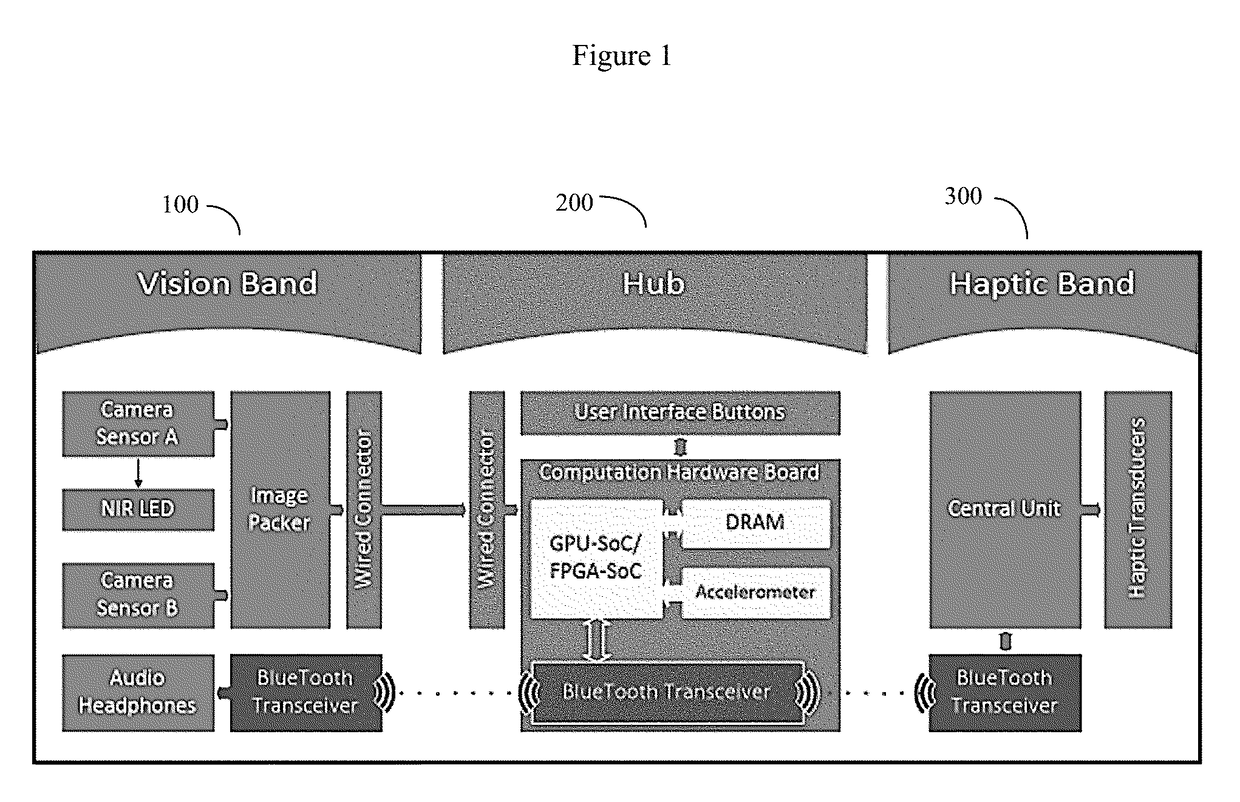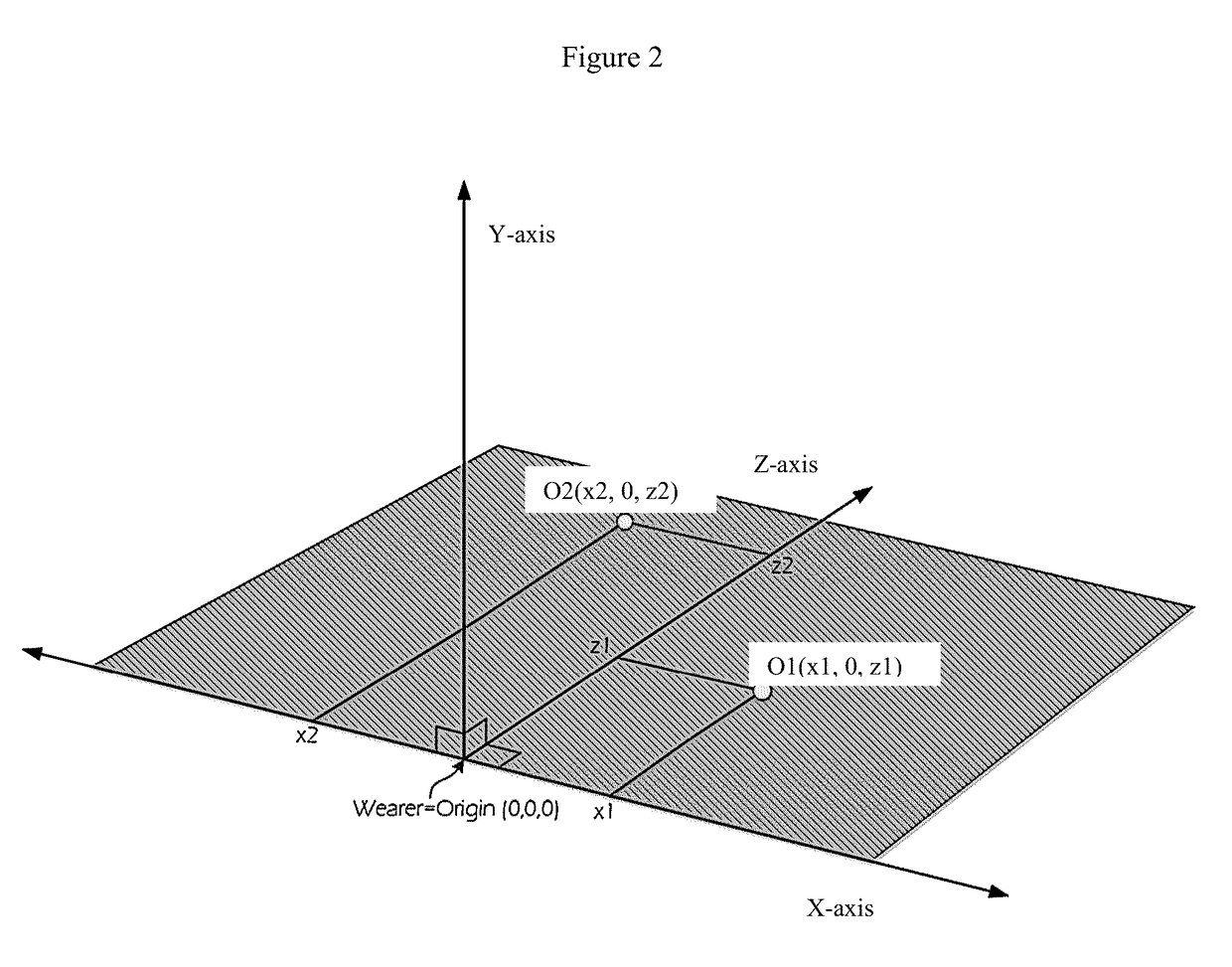Method and device for visually impaired assistance
a visual aid and assistive technology, applied in the field of visual aid devices, can solve the problems of limited or not present ability to perceive and recognize objects, substantial impediment in walking confidence, and partially sighted or blind people's ability to perceive objects, etc., and achieve the effect of replacing or augmenting vision
- Summary
- Abstract
- Description
- Claims
- Application Information
AI Technical Summary
Benefits of technology
Problems solved by technology
Method used
Image
Examples
Embodiment Construction
[0045]In broad terms, the invention may be viewed as a method, system, or device for visual assistance for a human user in an environment.
[0046]The invention typically comprises a head mounted video sensor band with at least two video sensors, here often referred to as “a plurality of user worn video sensors”. These video sensors are preferably worn about eye or forehead level, and in some embodiments may be configured to either look like standard eyeglasses, or may be configured to look like a specialized device as shown in FIG. 3.
[0047]The invention also typically comprises a haptic transducer band (see FIG. 18) equipped with at least two computer-controlled haptic transducers, here often called a plurality of spatially separated user worn haptic transducers. To keep the user's hand and fingers free for everyday use, these user-worn haptic transducers will typically be configured to be worn on parts of the body other than the user's hands, such as the user's arm (e.g. above the wr...
PUM
 Login to View More
Login to View More Abstract
Description
Claims
Application Information
 Login to View More
Login to View More - R&D
- Intellectual Property
- Life Sciences
- Materials
- Tech Scout
- Unparalleled Data Quality
- Higher Quality Content
- 60% Fewer Hallucinations
Browse by: Latest US Patents, China's latest patents, Technical Efficacy Thesaurus, Application Domain, Technology Topic, Popular Technical Reports.
© 2025 PatSnap. All rights reserved.Legal|Privacy policy|Modern Slavery Act Transparency Statement|Sitemap|About US| Contact US: help@patsnap.com



